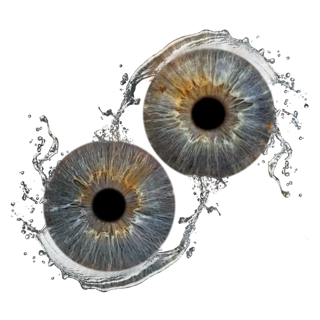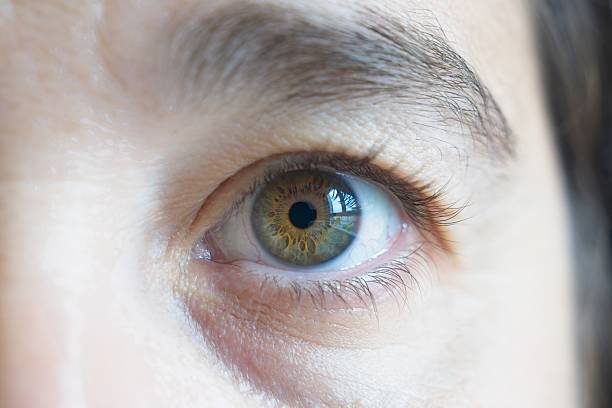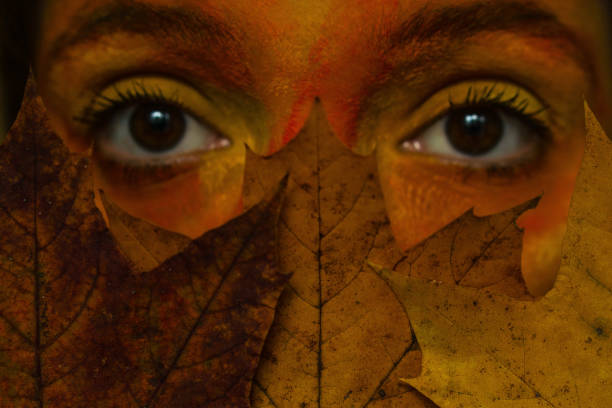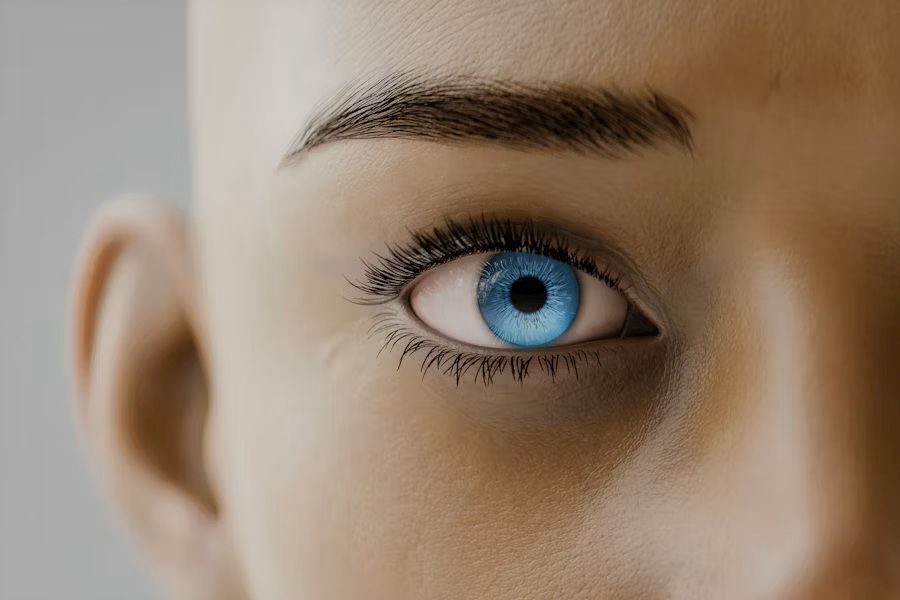Din indkøbsvogn er tom
How We Turn Your Eye into a Breathtaking Work of Art: The Revolutionary Fusion of Photography and Digital Artistry

The human eye has captivated artists for millennia, serving as a window to the soul and a canvas for creative expression. In today's digital age, we've revolutionized the ancient art of eye portraiture, transforming ordinary gazes into extraordinary visual masterpieces that blur the line between photography and fine art.
The Science Behind Eye Art Photography
Creating stunning eye art begins with understanding the intricate anatomy of the human eye. The iris alone contains over 250 distinguishable characteristics, making each eye as unique as a fingerprint. Our artistic process leverages this natural complexity, using specialized macro photography techniques to capture every minute detail that makes your eye distinctively yours.
The cornea's natural curvature acts as a biological lens, creating fascinating reflections and refractions that we enhance through careful lighting and positioning. Professional eye artists understand how to manipulate these optical properties, using ring lights, diffusers, and strategic angles to create dramatic effects that would be impossible to achieve with standard photography techniques.
Advanced Photography Techniques That Make the Difference
Macro Lens Mastery
The foundation of exceptional eye art lies in macro photography expertise. We employ high-resolution macro lenses capable of achieving magnification ratios of 2:1 or greater, allowing us to capture details invisible to the naked eye. These specialized lenses reveal the intricate patterns within the iris, the delicate texture of the sclera, and the perfect curve of the pupil's edge.
Lighting Architecture
Professional eye artists utilize sophisticated lighting setups that go far beyond simple ring lights. Multi-point LED systems with adjustable color temperatures allow for precise control over highlights and shadows. Cross-polarization techniques eliminate unwanted reflections while preserving the eye's natural luminosity, creating images with exceptional clarity and depth.
Focus Stacking Innovation
To achieve maximum sharpness throughout the entire eye structure, we employ focus stacking techniques that combine multiple images taken at different focal points. This computational photography method ensures that every detail from the front surface of the cornea to the deepest iris patterns remains in perfect focus.
Digital Enhancement: Where Art Meets Technology
Color Grading and Tone Mapping
The post-processing phase transforms raw photographs into artistic masterpieces. Advanced color grading techniques enhance the natural hues within the iris while maintaining realistic skin tones. High Dynamic Range (HDR) processing reveals details in both the brightest highlights and deepest shadows, creating images with extraordinary tonal range.
Texture Enhancement and Detail Refinement
Specialized algorithms enhance the natural textures within the eye without creating artificial artifacts. Frequency separation techniques allow for selective enhancement of fine details while preserving smooth gradations in larger areas. This process reveals the intricate fiber patterns within the iris and the subtle variations in color that make each eye unique.
Artistic Filter Application
Custom-designed artistic filters transform photographic images into painterly masterpieces. These filters, developed specifically for eye art, simulate various traditional art mediums including oil painting, watercolor, and pencil sketching while preserving the essential character of the original photograph.
The Creative Process: From Concept to Completion
Pre-Shoot Consultation
Every eye art project begins with a comprehensive consultation to understand the client's vision and artistic preferences. We discuss color schemes, artistic styles, and intended use cases to ensure the final artwork aligns perfectly with expectations.
Capture Session Methodology
Professional eye art sessions typically involve multiple setups and lighting configurations. We capture dozens of high-resolution images from various angles, each optimized for different artistic interpretations. This comprehensive approach ensures we have the perfect base image for any creative direction.
Post-Production Artistry
The digital artistry phase can take anywhere from several hours to multiple days, depending on the complexity of the desired outcome. Each image undergoes careful hand-editing, with artists making thousands of micro-adjustments to achieve the perfect balance of realism and artistic interpretation.
Popular Eye Art Styles and Applications
Hyperrealistic Portraits
Hyperrealistic eye art pushes the boundaries of photographic detail, creating images so sharp and detailed they appear almost surreal. These works often feature dramatic lighting and enhanced color saturation that makes the eye appear to glow from within.
Abstract Interpretations
Abstract eye art transforms the natural patterns within the iris into flowing, organic designs reminiscent of cosmic phenomena or natural landscapes. These pieces often incorporate vibrant color palettes and dynamic compositions that create movement and energy.
Mixed Media Compositions
Contemporary eye artists frequently combine photography with traditional art techniques, incorporating hand-painted elements, digital illustrations, and textural overlays to create unique hybrid artworks that exist at the intersection of multiple mediums.
Technical Specifications for Professional Results
Camera Requirements
Professional eye art demands high-resolution cameras capable of capturing fine details without digital noise. Full-frame sensors with at least 24 megapixels provide the resolution necessary for large-format printing while maintaining image quality.
Essential Equipment List
- Macro lens (90mm-180mm focal length)
- LED ring light with adjustable color temperature
- Sturdy tripod with precise positioning controls
- Remote shutter release for vibration-free capture
- Reflectors and diffusers for light modification
- High-resolution monitor for accurate image review
Software Requirements
Professional eye art requires sophisticated image editing software capable of handling high-resolution files and complex layer compositions. Industry-standard applications provide the tools necessary for advanced color grading, detail enhancement, and artistic filter application.
The Psychology of Eye Art
Eye art resonates with viewers on a profound psychological level. The human brain is naturally drawn to eyes, making eye-based artwork particularly compelling and memorable. This innate attraction explains why eye art has become increasingly popular in both commercial and fine art applications.
Research in visual psychology suggests that detailed eye imagery triggers emotional responses more strongly than other types of portraiture. The combination of familiar human features with artistic enhancement creates a unique viewing experience that is both comfortable and surprising.
Commercial Applications and Market Trends
The eye art market has expanded significantly in recent years, with applications ranging from personal portraiture to commercial advertising. High-end beauty brands frequently commission eye art for marketing campaigns, while interior designers incorporate large-format eye prints as dramatic focal points in modern spaces.
Social media has also driven demand for eye art, with platforms like Instagram and Pinterest showcasing stunning examples that inspire individuals to commission their own personalized pieces. The shareable nature of eye art makes it particularly effective for digital marketing and brand building.
Preservation and Display Considerations
Professional eye art requires careful consideration of preservation and display methods. High-quality archival printing on museum-grade papers ensures longevity, while proper framing with UV-protective glass prevents fading and color shifts over time.
For digital display applications, color calibration becomes crucial to ensure the artwork appears as intended across different devices and viewing conditions. Professional color management workflows guarantee consistent reproduction whether the art is viewed on screens or in print.
The Future of Eye Art Technology
Emerging technologies continue to expand the possibilities for eye art creation. Artificial intelligence algorithms can now generate artistic interpretations of eye photographs, while virtual and augmented reality platforms offer new ways to experience and interact with eye-based artworks.
3D printing technology has also opened new avenues for eye art, allowing artists to create physical sculptures based on digital eye models. These tactile artworks add a new dimension to the traditional visual experience, engaging viewers through multiple senses.
Choosing the Right Eye Artist
Selecting a professional eye artist requires careful consideration of technical expertise, artistic vision, and communication skills. Look for artists who demonstrate mastery of both photography and digital art techniques, with portfolios showcasing a range of styles and applications.
Professional eye artists should be able to explain their process clearly and provide examples of their work across different artistic styles. They should also offer consultation services to help clients understand the possibilities and limitations of eye art creation.
Conclusion: Your Eyes as Timeless Art
The transformation of human eyes into breathtaking works of art represents the perfect fusion of technical precision and creative vision. Through advanced photography techniques, sophisticated digital enhancement, and artistic interpretation, ordinary eyes become extraordinary masterpieces that capture the essence of individual identity while transcending the limitations of traditional portraiture.
Whether you're seeking a unique personal portrait, a striking piece for your home or office, or a memorable gift that celebrates the uniqueness of someone special, professional eye art offers an unparalleled combination of technical excellence and artistic beauty. The result is not just a photograph, but a timeless work of art that reveals the hidden beauty within one of humanity's most expressive features.
In an age where digital imagery surrounds us constantly, eye art stands apart as something genuinely special—a personalized masterpiece that celebrates the unique beauty of human individuality while showcasing the incredible possibilities that emerge when cutting-edge technology meets artistic vision.
Efterlad en kommentar
Kommentarer vil blive godkendt, før du vises.




